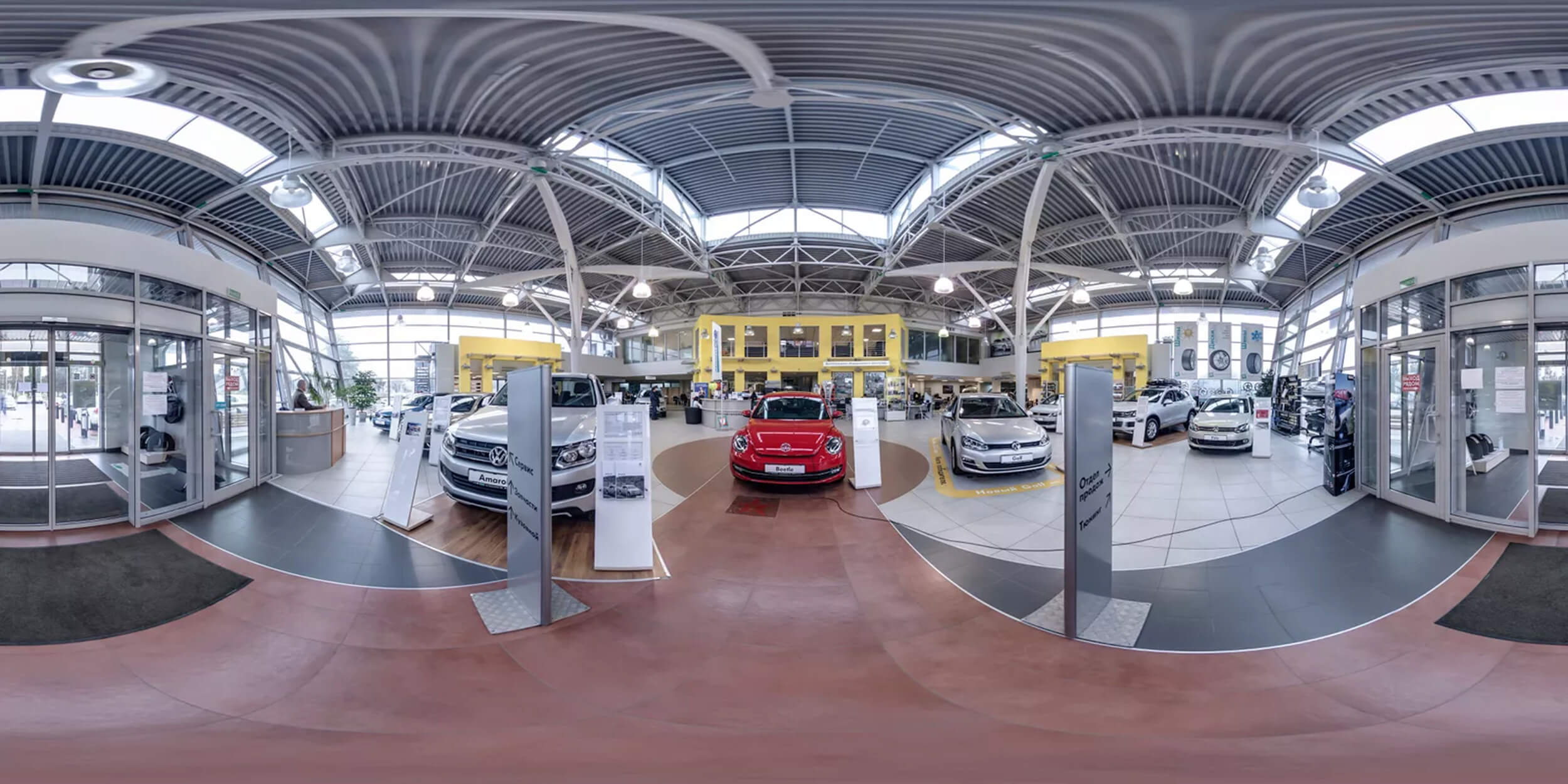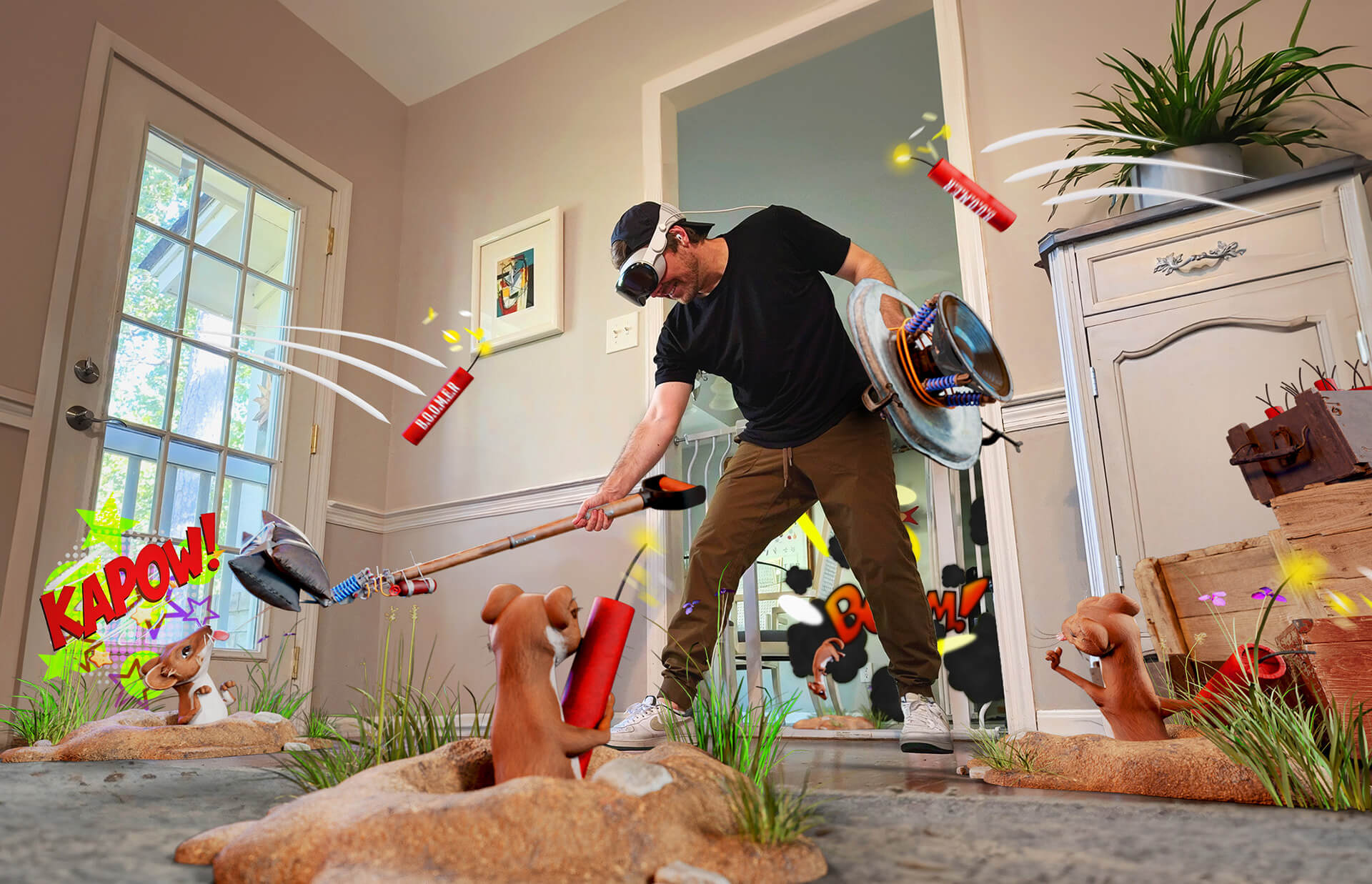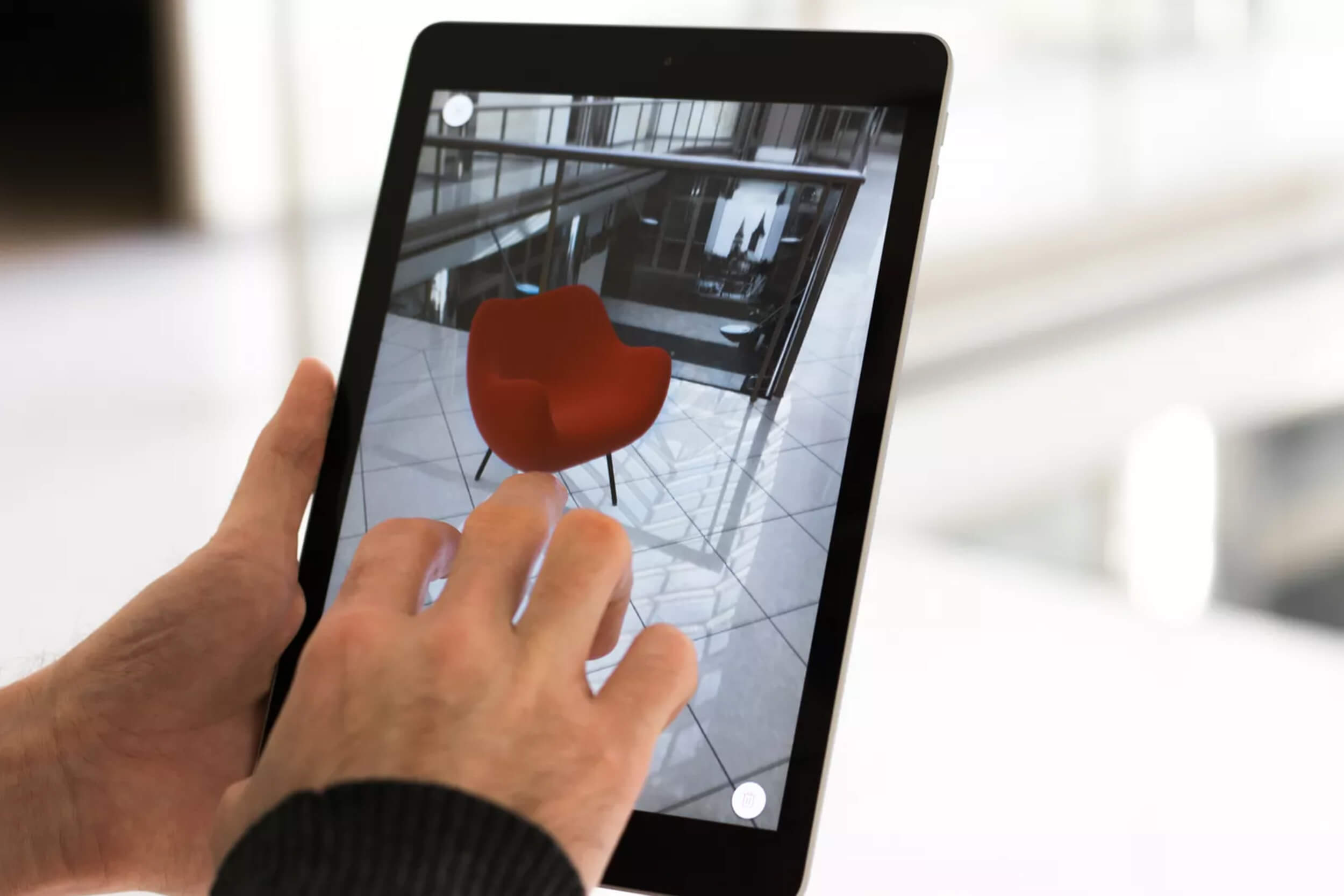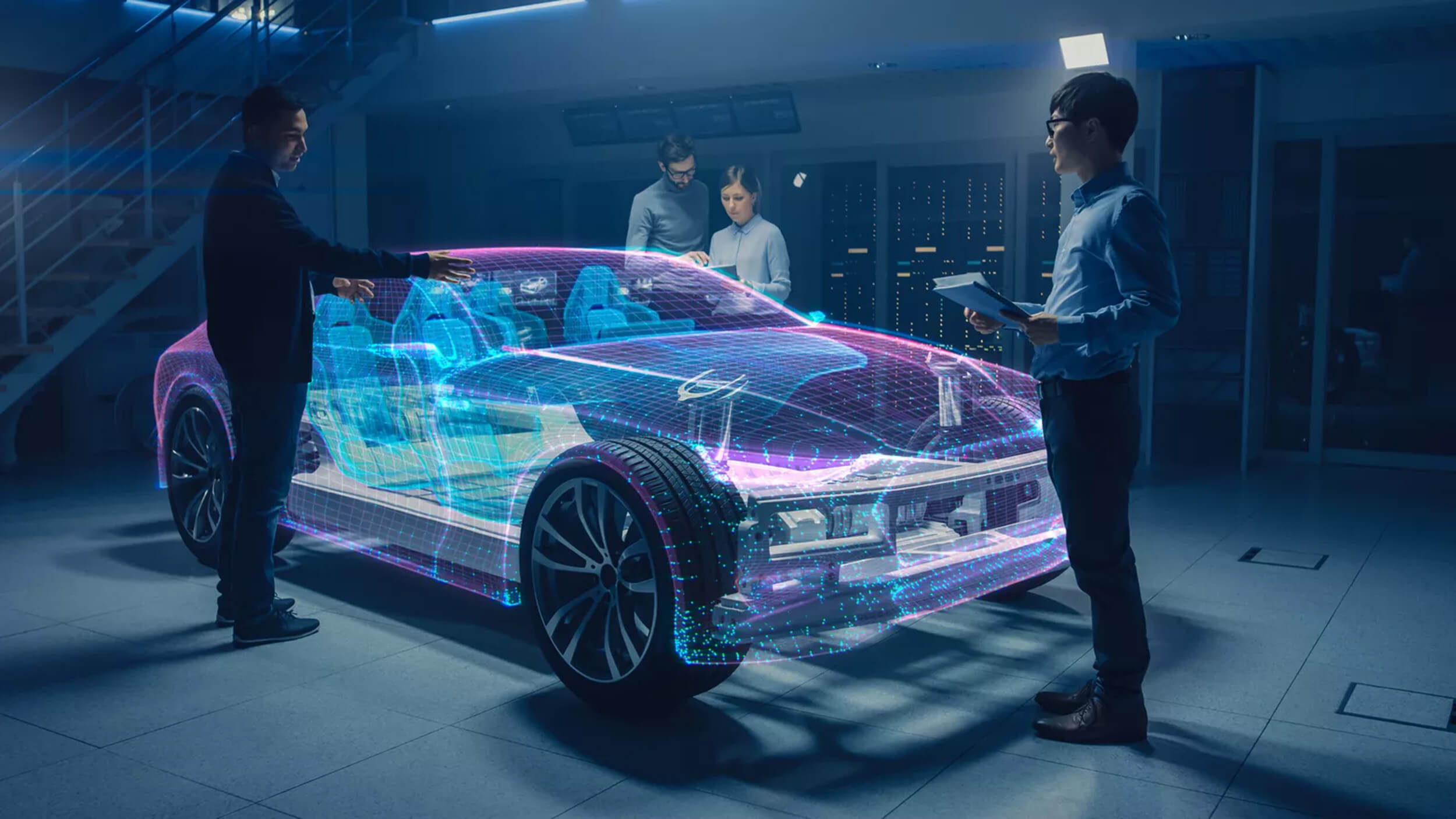The pandemic has changed the way customers prefer to shop. To survive in this ever-changing industry, the retail sector has had to evolve to oblige consumer preferences. This transformation is being driven by virtual showrooms, which let brands display products in information-rich, interactive environments.
Here are some of the ways in which virtual reality (VR) and augmented reality (AR) are helping brands to create new customer experiences and increase revenue.
What Is a Virtual Showroom?
Virtual showrooms are digitally created 360° environments with the same look, feel, and function as a physical showroom. Buyers can “tour” the showroom and interact with 3D product images while examining these items from all angles.
Products can be anything from clothes to makeup, electronic gadgets to industrial machines. Within this setting, customers are able to view specifications, make comparisons with other models, and explore virtual demos. If any questions arise during their visit, they can connect with a sales representative directly in the digital showroom.
3 Types of Virtual Showrooms
There are several digital technologies currently being used to build virtual showrooms. Virtual reality, augmented reality, and WebAR—all immersive technologies—are the most common. Depending on the technology, the virtual showroom can let shoppers interact with objects in 3D or immerse them in a virtual world.
Augmented Reality Showrooms
Augmented reality (AR) comprises a live view of a real-world location with computer-generated sensory input. Multimedia content, including sound, video, graphics, and GPS data are overlaid on the environment. One such example is the AR Jaguar Showroom.
The Jaguar augmented reality app creates highly realistic representations of these luxury vehicles. In the setting of an actual showroom, clients can point their iOS or Android cameras toward the front of the car to look inside the vehicle, drive it, and even park it.

Source: Shutterstock
Virtual Reality Showrooms
Unlike AR, VR technology allows companies to create a digital showroom where buyers can shop remotely, using a headset or smart glasses to browse. Businesses leverage this technology for a variety of use cases, for instance:
- Conducting Virtual House Tours: Consumers can immerse themselves in a tour of homes they are interested in purchasing.
- Creating Virtual Stores: Retail stores replicate their physical stores in a virtual environment.
- Performing Virtual Product Presentation: Companies use the technology to create product-specific virtual experiences.
- Creating Interactive User Manuals: Businesses provide real-time support to consumers as they use the product.
- Live Video Consultations: VR lets firms replicate one-on-one customer experiences in a computer-generated environment.
- Branding Promotional Activities: VR empowers brands to connect emotionally with shoppers. Virtual showrooms are utilized to show how the product is made or share the story behind its development.
- Customer Research: It is simpler to conduct buyer research in a virtual setting. Brands use customer tracking and interaction data to identify specific preferences, thereby enabling marketing departments to tailor their messages to grab a shopper’s attention.
- Offering Personalized Recommendations: The system comes up with suggestions, such as product matches or other merchandise a customer may like, based on data gathered by eye-tracking devices and VR software.
Let’s chat
Not sure where to start? Book a free strategy call with us to get started! No strings attached.

Brands Using Virtual Showrooms
Many brands are already using virtual showrooms to great success. Their innovation has inspired other brands to embrace the technology. Two notable examples of this phenomenon are:
Amazon: The company installed VR kiosks in shopping malls across India. These kiosks were dedicated to promoting Amazon Prime membership. Shoppers could take a virtual hot air balloon flight to an imaginary Amazon city to explore products.
Ikea: Ikea launched a VR app that allows customers to design living spaces, choosing materials, colors, furniture, and interior details. These plans could be shared across social media, thus expanding the brand footprint. According to Touchstone Research, 81% of people who had experienced VR reported having told their friends about it.
Web Showrooms
WebAR technology enables companies to experiment with augmented reality features without having to make a huge upfront investment. All a customer needs to access the showroom is a web browser, and that’s it.

Source: Shutterstock
Virtual Showroom Benefits
A virtual showroom is the ideal solution for today’s buyers. With physical stores, companies can only display a limited number of products, and there’s not enough time to convey important information. Virtual showrooms eliminate these challenges.
Some of the many benefits of virtual and augmented reality include the following.
Faster Purchasing Decisions

Source: Shutterstock
Shoppers want to experience products and make informed decisions without pressure, anxiety, or other distractions. Augmented reality and virtual showrooms let individuals shop at leisure.
This technology enables buyers to receive comprehensive and detailed product information—more so than if they were shopping in person. With all the necessary information at their disposal, it’s much easier and quicker for them to make the decision to purchase, as well as enjoy full confidence in their choice.
Competitive Advantage
Since most businesses don’t yet have virtual showrooms, creating an interactive digital space can give your brand that competitive edge. For shoppers, this is not simply another storefront; instead, a VR showroom is where businesses get to create that “X-factor” image that consumers expect. It is also an opportunity to connect with prospective buyers in a way that is much more personal than a standard online store.
Virtual Showrooms Increase Customer Engagement
Customers spend more time interacting with content in a virtual showroom. The technology is designed in such a way that it engages shoppers as they browse. In a digital environment, it’s possible to examine the products as well as move around the showroom, zoom in where needed, and explore new features in-depth before committing to purchase anything.
VR tools allow companies to interact more closely with their clients—whether through product images and videos of services offered, or by providing them with an opportunity to ask questions and receive answers directly from sales representatives via a virtual help desk.
Easily Accessible and Open 24/7
A key benefit of virtual showrooms is that they can be accessed through a variety of devices—not only tablets, desktops, and laptops, but also mobile phones. This is good news for brands, with a recent report indicating that the number of mobile users worldwide stood at 7.1 billion in 2021. In addition, virtual showrooms are open 24/7, enabling customers to search for and purchase products anytime, day or night.
Businesses with virtual showrooms can thus engage with an exponentially larger number of buyers than traditional stores. Moreover, the longevity of digital showrooms means they bring in more leads over a longer time period. This feature maximizes engagement rates while elevating your brand profile.
Reduced Operational Costs
Virtual showrooms eliminate the need to make substantial investments in real estate and manpower, not to mention equipment and fixtures such as cash registers, etc. Although there is a cost associated with setting up the technology, maintaining it requires a considerably smaller commitment. Ultimately, this saves on operational costs.
Expand into New Markets
Typically, expanding into a new market requires a significant capital outlay. Items such as leases on storefronts, paint, carpets, furniture, and more will impact your bottom line. Virtual showroom technology lets companies reach consumers across the globe, but without the associated expense.
Simplified Inventory Management
Simplified inventory management is another key to unlocking business success. The virtual or augmented reality showroom eliminates the need for long-term storage or expensive physical storefronts. In addition, they can be easily updated with new products as needed.
Better Customer Experience
Virtual showrooms are also more attractive to consumers.
Firstly, they make shopping extremely convenient by allowing people to look at all the available merchandise from the comfort of their home, without having to go from store to store. There is no traveling cost involved in viewing the merchandise, no matter where you are in the world. And there’s also no restriction on how many products can be displayed online.
Secondly, a digital showroom lets buyers interact with the products in an immersive environment, with 3D models of products instead of static images or videos. VR showrooms are especially helpful when it comes to large catalogs and items that require extensive product research. The digital shopping experience gives buyers more detailed information about products they are considering. They can take their time and research items to ensure they select the best option.
Keep up to date
Sign up to our newsletter for exclusive updates and content, delivered directly to your inbox.
Best Virtual Showroom Practices for Best Results
Companies should remember that the digital experience impacts user perception and can be a great opportunity to turn casual shoppers into brand loyalists. Touchstone research reports that 20% of consumers indicate a branded VR experience would make them feel more positive toward the brand.
Using best practices helps brands follow the recommended approach to providing customers with an outstanding experience. Companies may face challenges when designing a digital showroom. It’s important to understand what these challenges are and how following best practices can help businesses overcome them.
Tailor to Customer Needs
To meet the needs of consumers, organizations must deliver unique shopping experiences that are personalized to stand out from their competitors. The digital marketplace has made it easier for people to shop across multiple channels. Tailoring the experience to their requirements builds trust and shows them that the company cares about what they want.
Align Virtual and Physical Tours
A company’s virtual tour is often seen as a mere supplement to the physical product. However, this couldn’t be further from the truth. In reality, the buyer experience starts at the point an individual accesses your website or walks through your doors.
Aligning these tours to create a seamless experience improves a consumer’s perception of your business. Whether they visit the store in person or digitally, it should be clear how the two relate. To this end, aligning virtual and physical tours helps to create brand consistency which, in turn, increases brand recall.
Set and Monitor KPIs
Companies that are just starting their virtual and augmented reality journeys should first decide what they want to achieve. It’s much easier to build a digital strategy once the organization’s primary objectives have been defined. Key performance indicators may include:
- Improved sales
- Better customer satisfaction
- Better brand awareness.
- Reduction in unsold stock
- Decreased marketing costs
- Saving money on trade shows
Create Engaging Content for Your Virtual Showroom
Make your content and the buyer experience engaging by ensuring your merchandise can be viewed from different angles. Write detailed product descriptions that answer all the questions consumers may have. Include information about product materials, color options, price, where the product is made, size range, fit, and delivery dates.
Showcase Product Collections
Use your digital environment to showcase collections that retail clients may not have thought of otherwise. Test different product assortment strategies and share them with buyers and your team to get feedback. The benefit is that you can sort and arrange items easily from anywhere and share ideas and input immediately.
Provide Next Steps to Move Your Audience Down the Funnel
A VR or AR sales funnel is a method to guide your audience from the top of this digital marketing strategy to the bottom. To do this successfully, companies should provide steps that are easy for their customers to follow. For example, offers related to virtual reality tours and demonstration sessions will lead shoppers through an immersive experience that tells them what to do at each stage.
Start Building Your Virtual Showroom Now
Virtual showrooms are a novel way for brands to engage consumers. The technology lets companies display their products in an immersive and interactive environment. Customers can then explore these products at leisure and from any location.

Source: Shutterstock
Augmented reality and VR technology are already making an appearance in major brands such as Amazon and Ikea. These computer-generated environments have many use cases, from product demonstrations to virtual house tours and product manuals. Companies that use the technology will see a host of benefits, such as higher levels of user engagement, expanding their clients’ reach, and gaining a competitive advantage. All of these will have a positive impact on their bottom line.
If you plan to effectively leverage the immense power of VR and AR, selecting the right partner is critically important. You need to work with an experienced agency that not only has a stellar track record but also a firm grasp of the technical know-how needed to bring your vision to life.
Rock Paper Reality (RPR) has been at the forefront of augmented reality development for over 12 years. Having worked with clients such as Microsoft, Netflix, and Lenovo, the experts at RPR are ready to work with you every step of the way to ensure that your brand stands out from the competition.
Contact us today for a free demo and discover how our clients have achieved strong ROI with our proven solutions.
